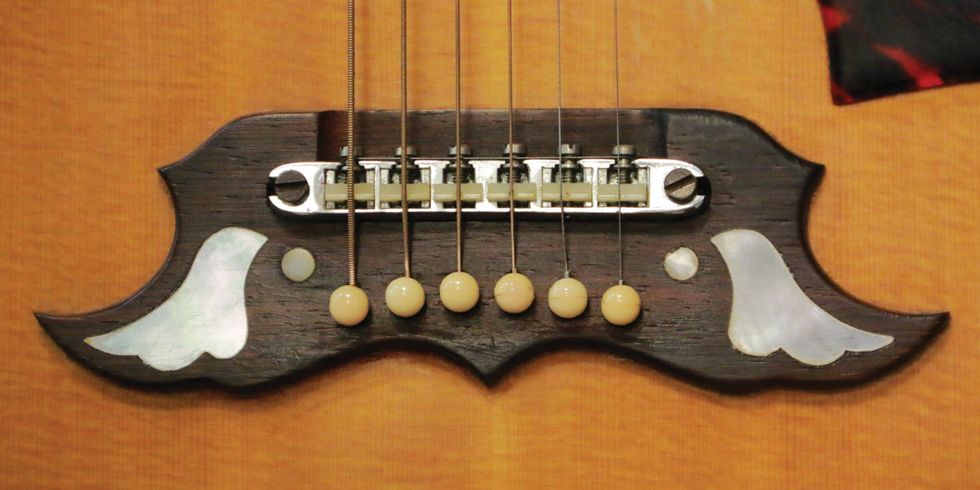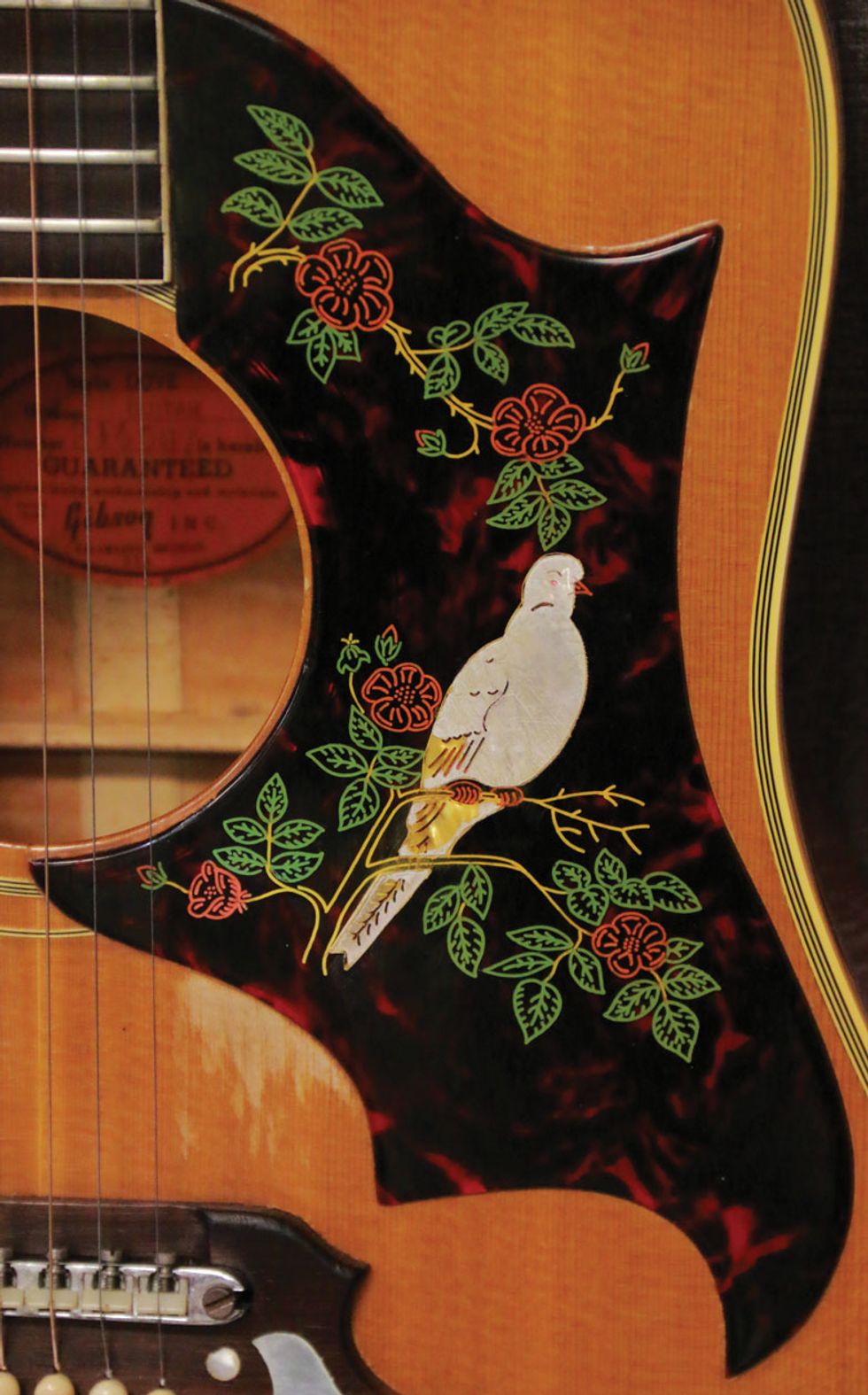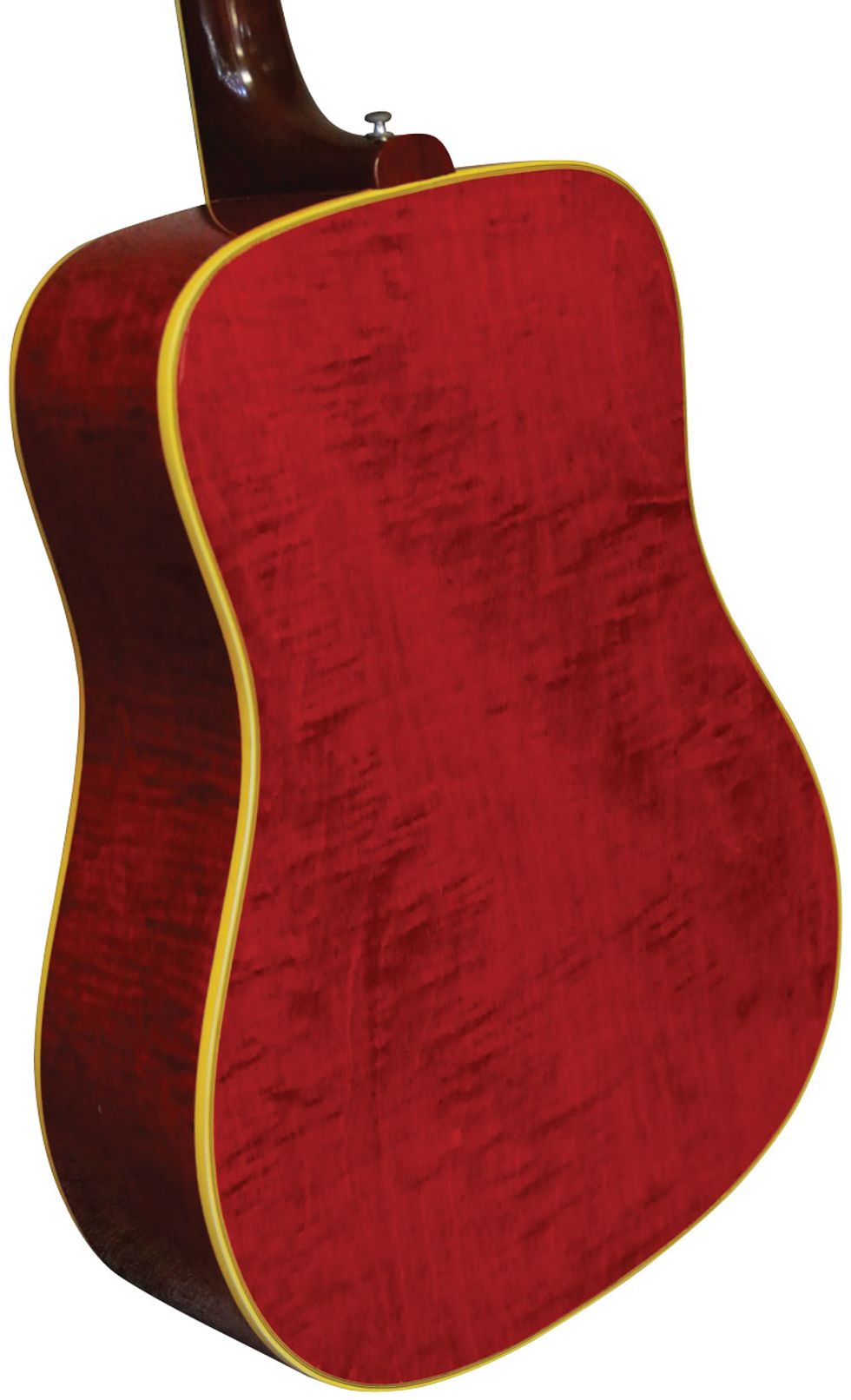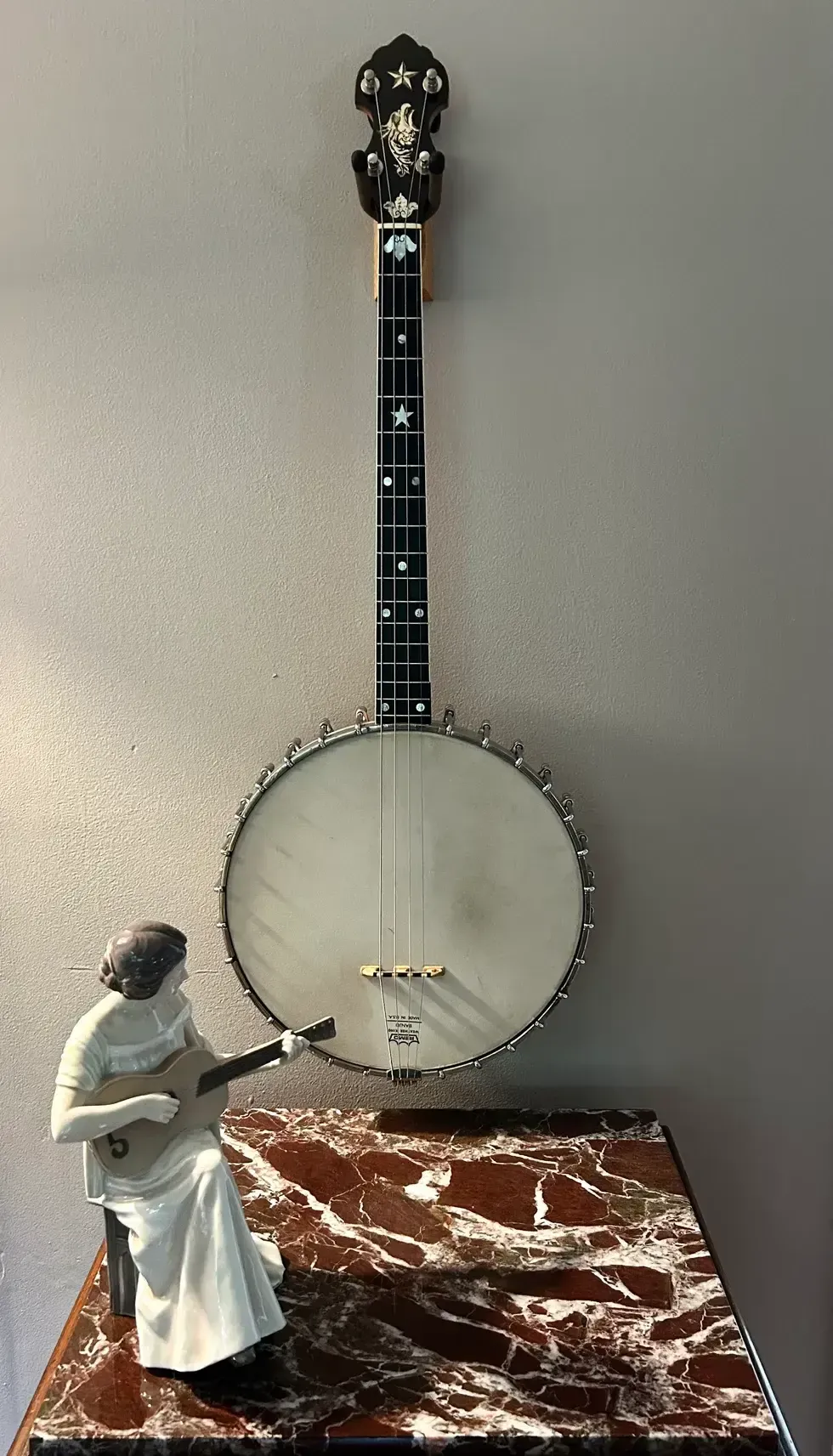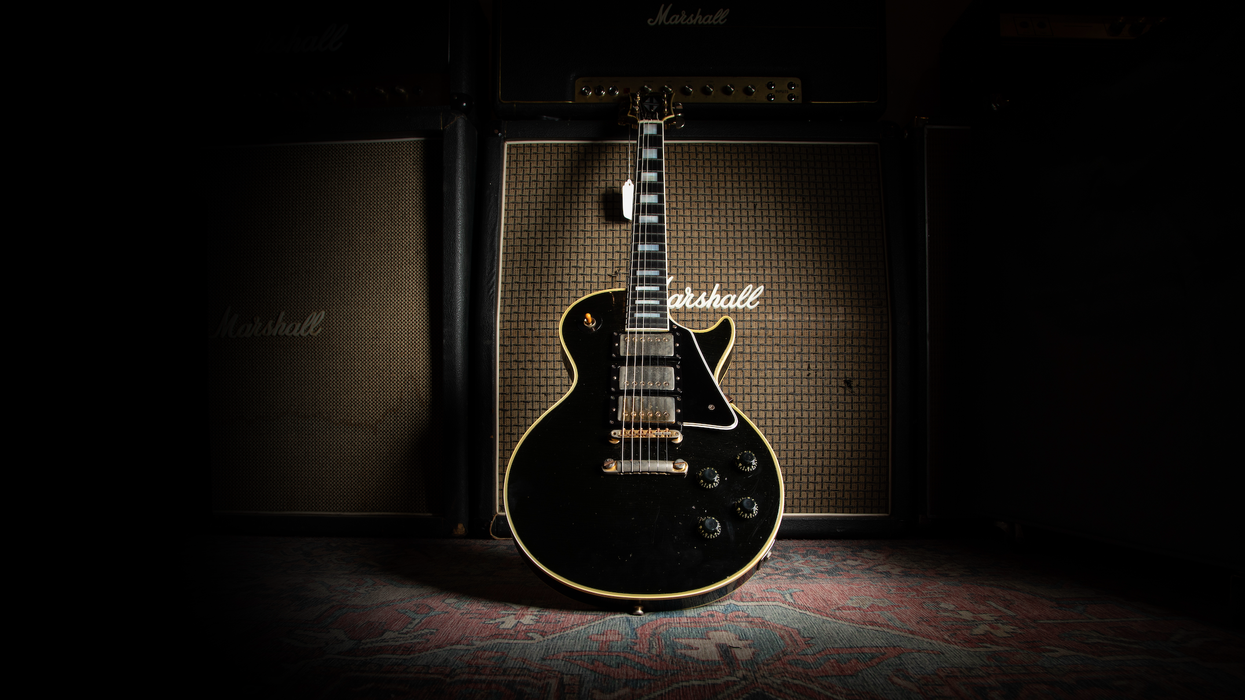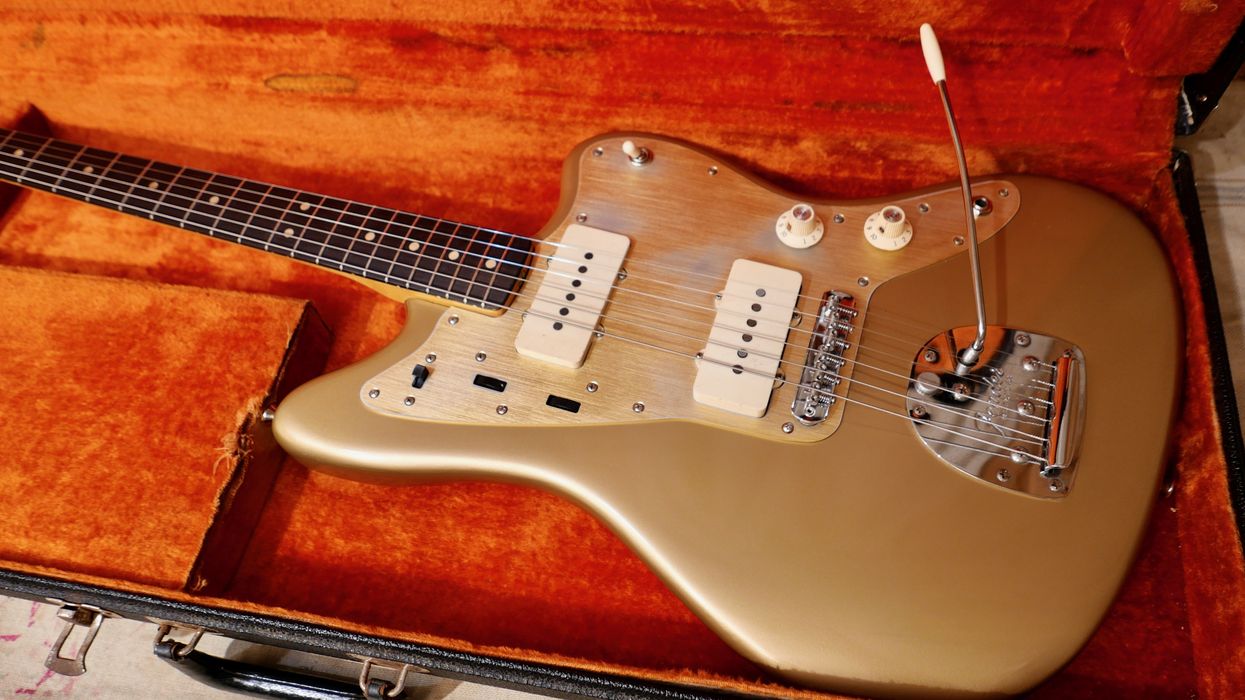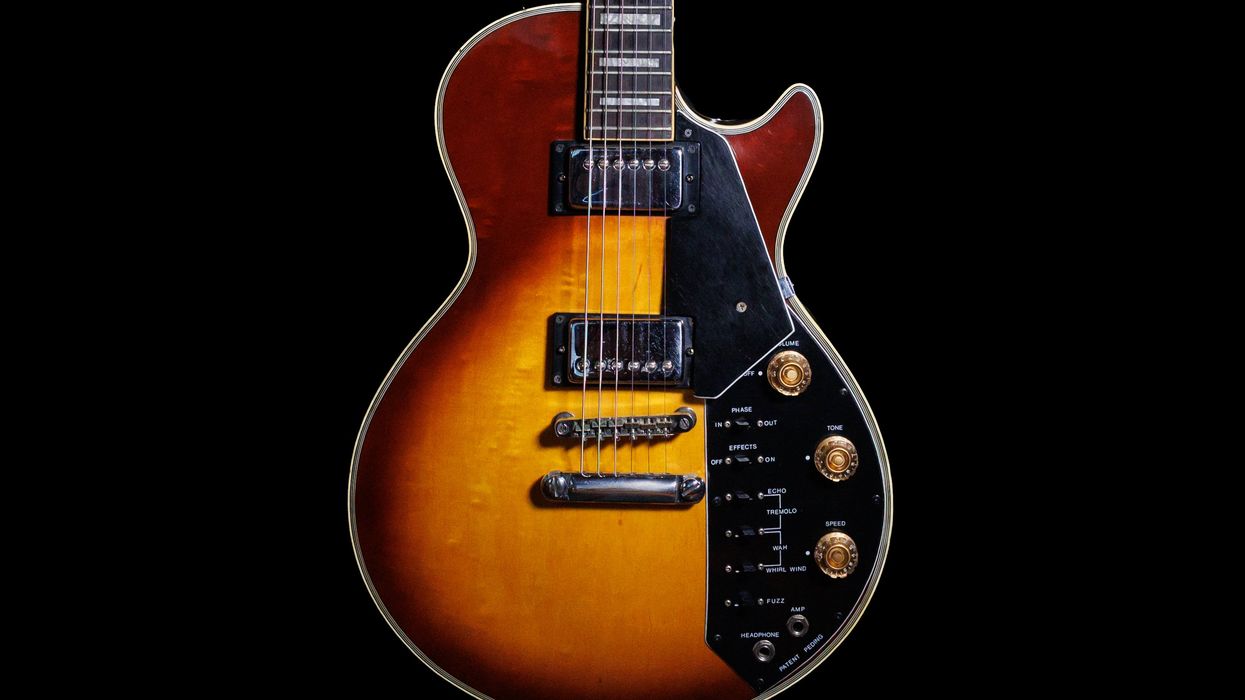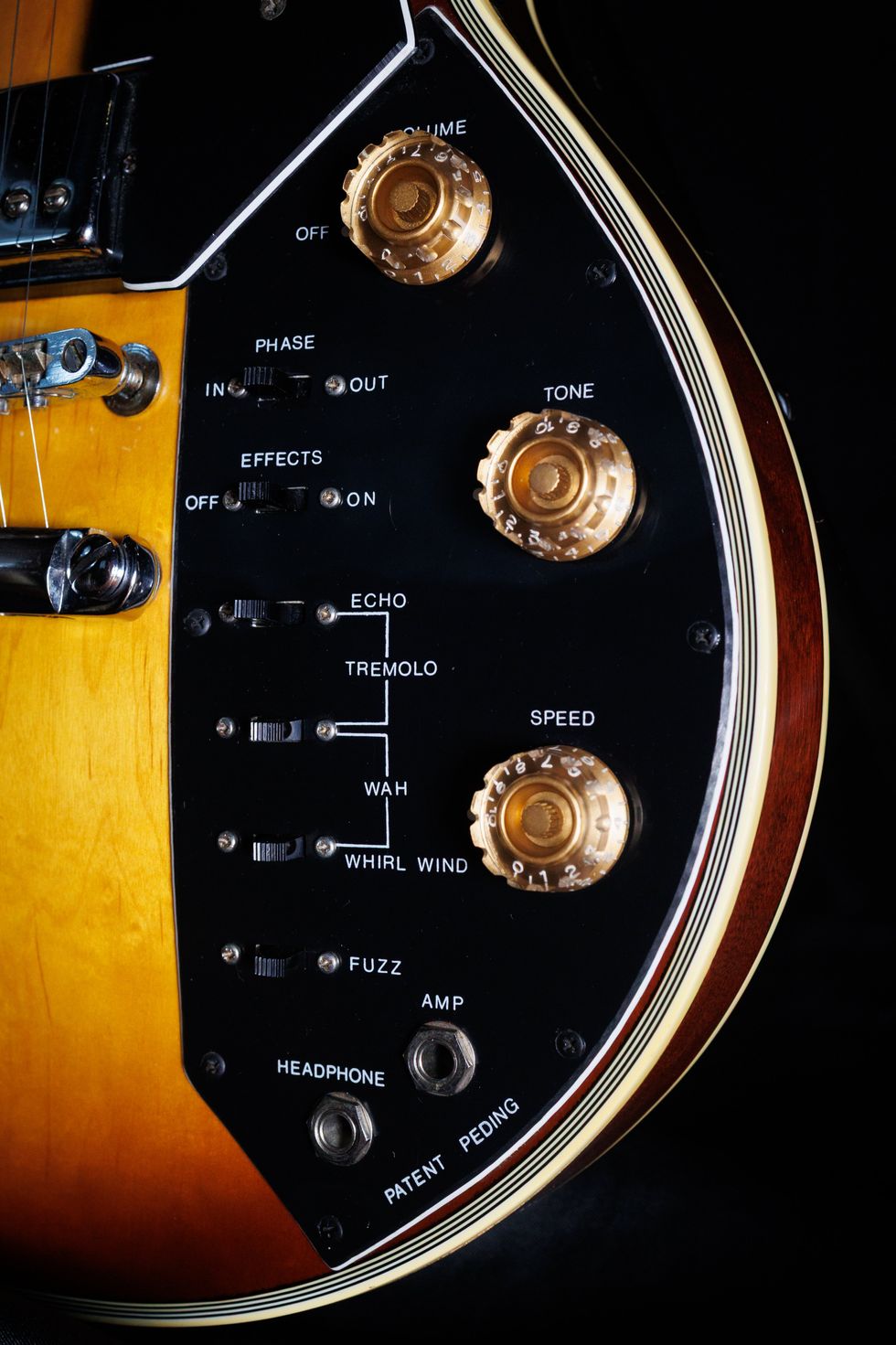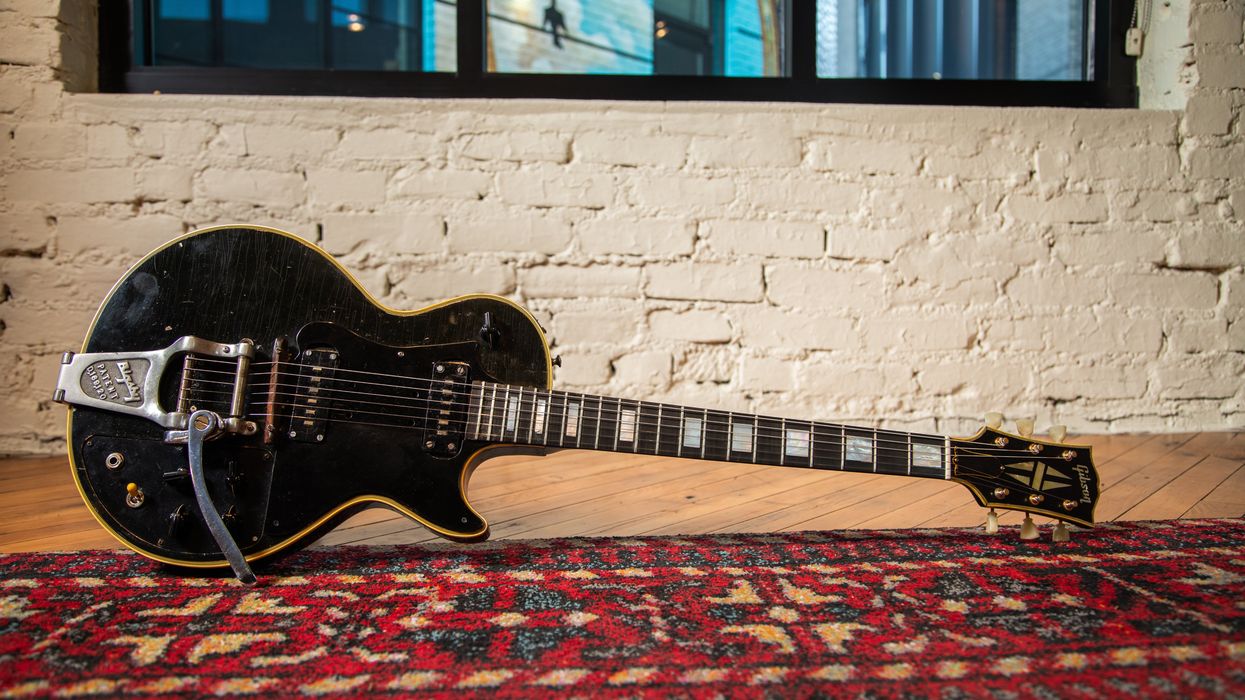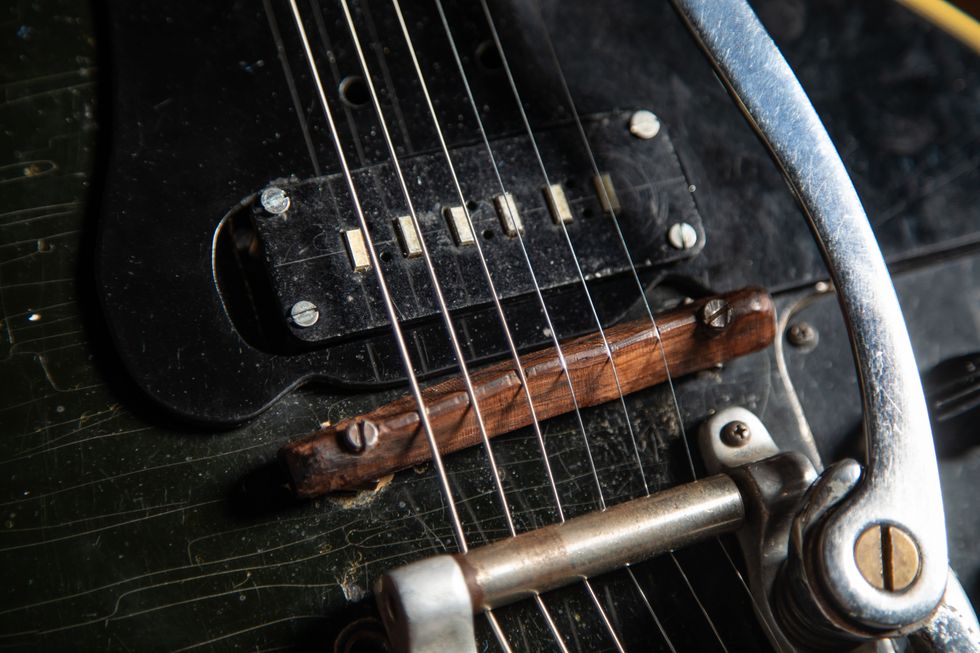The great thing about working in a music store in Nashville that specializes in used instruments is that you get all types of interesting and unique pieces coming through. One day, it could be a sitar that was bought and used only once in a session. The next, it could be a really cool ’60s drum kit. But for the most part, it’s a parade of conventional stringed instruments, like guitars.
Doves from this era had a Tune-o-matic-style bridge. Some disliked the sound it produced, but the nylon saddles made the guitar easier to fine tune and, to some ears, these Doves had a more even tone with a bit of growl and edge.
Recently a local family brought in a 1964 Gibson Dove—an amazing guitar, in that it’s in great condition considering that during this era of Gibson’s acoustic production, thin wooden tops and light bracing were the norm. Not many of these guitars from this period have survived, due to warping tops and/or bracing issues. However, if you’re able to find an early ’60s Gibson Dove, you quickly learn these guitars have a sound of their own. This one also has a story. It had only a single owner—a bluegrass musician whose decision to purchase it in 1964 against his wife’s wishes almost resulted in a divorce.
Here’s some less personal background. In 1960, Gibson entered the square-shouldered dreadnought business with the Hummingbird model, inspired by the Martin D-style dreadnought guitar. Their entry was an immediate success, and in 1962 Gibson released the Dove. While the Hummingbird had a solid mahogany back and sides, the Dove had a maple back and sides along with a longer scale-length (25 1/2" vs. 24 1/2"), which made it a louder and brighter guitar. These changes, along with the visual appeal of parallelogram fretboard inlays, an inlayed and engraved bridge featuring two doves, and a handmade pickguard bearing a mother-of-pearl dove that was only available in early models, all make the 1964 we’re eyeballing a rare and historic guitar in Gibson’s acoustic line.
The bird design on the Dove pickguard from this era was hand-cut and inlaid, and the filigrees were engraved.
For the most part, Gibson’s acoustics feature bodies made of rosewood and mahogany, but, as mentioned, the Dove was made of maple, just like the popular J-200, which was the company’s most expensive model. The Dove came with a natural top or sunburst finish along with those mother-of-pearl dove inlays in the pickguard and the bridge. These gaudy-but-great features were added to Gibson’s higher-end acoustic guitars of the era to attract country artists and their fans—although Elvis Presley also played a Gibson Dove throughout his Las Vegas period.
The parallelogram fretboard inlays were among the distinctions that Gibson hoped would appeal to country music performers and their fans.
One controversial issue about Doves from the mid-’60s is the Tune-o-matic-style bridge that Gibson used for them. After they made the internal bracing heavier, Gibson received complaints about diminished tone and volume on Doves. My opinion, and that of many players I know, is that Gibson’s original bridge design of the Tune-o-matic style featuring nylon saddles that’s still intact on this ’64 was very clever. The reason: With these early models, the wood and bracing were lighter, and, with the back and sides being maple, this guitar had a really bright sound. But the Tune-o-matic bridge with the nylon saddles made the guitar easier to fine tune, and provided a more even tone with a bit of growl and edge, making for a killer rootsy rock ’n’ roll acoustic guitar sound. So, this guitar is a real badass!
This Dove has a maple back and sides along with a 25 1/2" scale length, making it a louder and brighter guitar than its sister-model Hummingbird.
After playing this guitar, I wish I could afford it. But, with a price tag of between $7,495 and $7,999 for 1964 Doves, for now it’s on my bucket list. Sure, the Gibson Dove line has evolved, but this early 1960s original is one of the most iconic acoustic guitars ever made.




